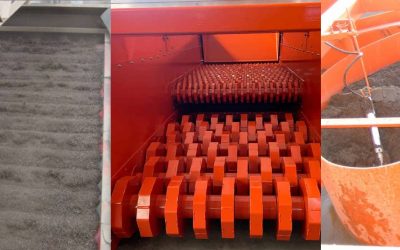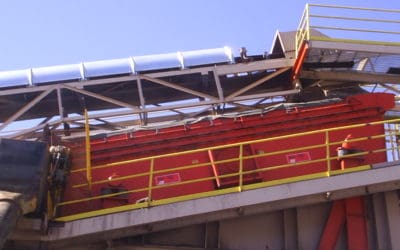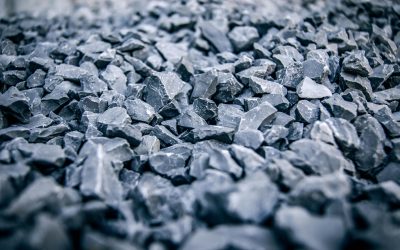Material screening is necessary for everything from aggregate production to municipal solid waste processing. The optimal screening equipment will depend on the material being screened, sizing requirements, and cost considerations.
Traditionally, trommels and star screens are among the most common pieces of screening equipment. While effective, both types of screens have their respective shortcomings.
As technology advances to meet the needs of today’s industries, screening equipment continues to improve. Disc screens have become an increasingly important type of screening equipment as they offer advantages that make them the ideal solution across many industries.
An Overview of Disc Screens
Disc screens are used in many industries and are capable of screening almost any material – from solid waste and compost to scrap metal and car tires. All disc screens share a similar design.
Disc screens are comprised of mounted rotor shafts. Each shaft includes a series of mounted discs. The discs of one shaft are faceted with those on the subsequent rotor shafts while leaving spaces for undersized material to fall through.
The design and placement of the discs allow the material to float over the screen. In addition, the discs are ideal for agitating the material, further adding to the screen’s efficiency. While seemingly straightforward, this design yields a number of benefits over other types of screening equipment.
Higher Efficiency Screening Vs. Trommels & Star Screens
Trommel Screens
Trommels rely on tossing the material to screen for fines. While the principle is simple, it has become inefficient, particularly for screening solid waste and other difficult materials.
Tossed materials, especially those that are wet or sticky, often remain clumped together inside of the trommel drum. The rotation is not sufficient in separating materials, which results in a lower quality product and increased blinding of the screen media. In turn, productivity is decreased and profit margins are thinned.
Star Screens
Star screens, while similar to disc screens, are better suited for bulkier materials. Star screens are often used with materials like wood or larger aggregate, but they are less effective when screening finer materials such as ash, organic waste, or plastics. Like trommels, star screens are less efficient and require an upward tilt to maintain efficiency. Once again, star screens can make meeting product specifications difficult, impacting your operation’s profit.
Disc Screens
By comparison to stars and trommels, material fed onto a disc screen passes in a single layer across the screen surface. There, the material is evenly distributed and churned by the rotating discs.
The churning of the discs results in efficient screening. As materials are churned, clumped or heterogeneous materials, such as biomass and solid waste, are better separated. Oversized materials easily pass over the screen area, while undersized materials fall through the spacing of the discs.
Additionally, the discs are designed to further agitate and beat the material. This process results in higher yields with less blinding, clogging, and wrapping of the screen. Overall, disc screens require less downtime for maintenance and cleaning, increasing their throughput.
Disc Screens Need Less Maintenance
In screens where clogging is more common, maintenance costs become a concern. While blinding and clogging of screens lowers their efficiency, this issue is further compounded by the cost of maintaining the machine. In the case of trommels, damage may require the replacement of the entire drum which is both costly and time-consuming.
Disc screens offer a unique advantage in their design. Generally, the discs and rotor shafts are less prone to damage and wear. In the event that damage does occur, repairs often only need to be made to a single rotor shaft, allowing for lower costs and more uptime.
They Offer A Smaller Footprint
One of the greatest advantages of disc screens is their compact design. When compared to other types of screening equipment, disc screens can process the same volume on a screening surface less than half the size. Their smaller footprint also results in a wider range of mobile options. This can be a great benefit for industries that require mobility.
The Freedom Disc Screen
The Freedom Disc Screen offers all of the advantages of traditional disc screens, with additional benefits derived from its unique design. The Freedom Disc Screen offers durable construction, with HARDOX discs built to withstand even the most demanding screening applications. Its durable construction is coupled with a highly energy-efficient design.
When compared to other types of screening equipment, the Freedom Disc Screen is capable of performing the same work while utilizing less than half the energy. In addition, the Freedom Disc Screen allows for instant changing of screen size by adjusting the operation speed of the machine.
Contact us online for more information or request your quote today to learn how The Freedom Disc screen will benefit your operation.


